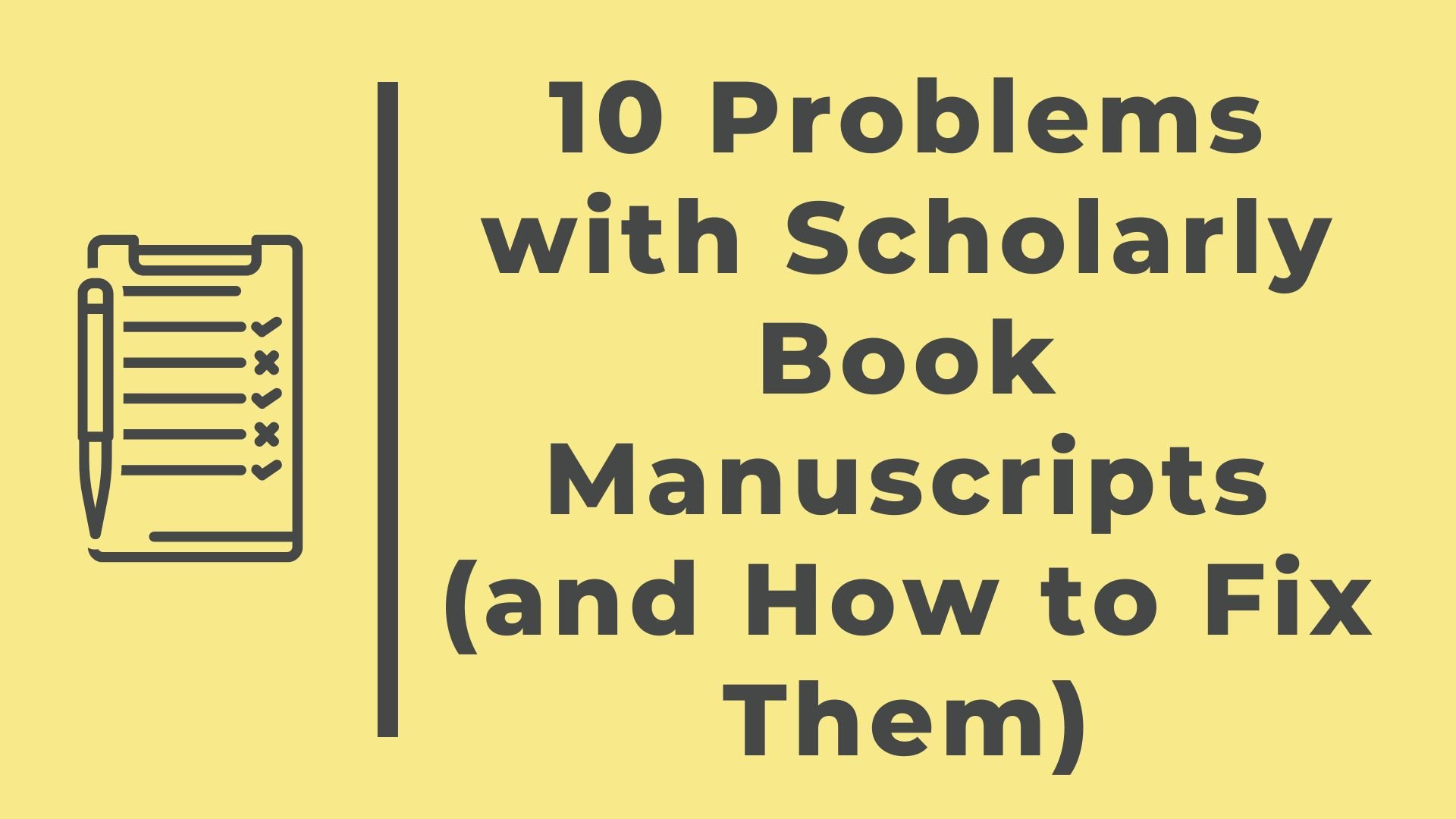All book manuscripts need revision. The first draft (or first several drafts) of your scholarly book manuscript will probably be key to developing your own thinking about your topic. You’ll be figuring out what you want to say and how you want to step into to the ongoing scholarly conversation you’ve been reading for many years. Once you’ve used those drafts to get your own thinking in place, it’s time to revise with publishers and readers in mind. This post offers ten common issues that need to be revised before a manuscript is ready for submission or publication.
I recently reviewed all the editorial assessments I’ve written over 7 years of helping scholarly authors with their book manuscripts (all of which were research monographs in the social sciences and humanities). Drawing on my qualitative research background, I loosely coded this corpus of letters in order to find patterns in the feedback and create a list of the most frequent issues I’ve seen scholars struggle with in their drafts. I then came up with an accompanying list of the ways I’ve advised the authors to address those issues. I wanted to share the top ten items in case they are useful to those editing their own manuscripts for publication. Feel free to use the items below as a checklist in your revision process.
Counting down from roughly the tenth most common issue to the first:
10. Chapters lack clear internal structure. Fix this with section headings (3–5 is a good number) that signal how each part of the chapter contributes toward the chapter’s overall purpose/argument—and make sure each part of the chapter actually does contribute.
9. Primary source material is presented without interpretation or argument. Fix this by summing up quotations and other primary evidence in your own words and explaining how it supports a larger point. If you’re not sure, go back to why you decided to include it in the first place.
8. Key concepts aren’t defined and aren’t pulled through the analysis across the text. Fix this by defining your most important terms up front and re-using the terms across the text when applicable. This helps your concepts become continuous thematic through-lines.
7. Arguments and theoretical points are left abstract. Fix this by using stories and examples frequently to illustrate the points you want readers to absorb. Even 1–2 sentence examples sprinkled in can go a long way toward grounding heady discussions.
6. Everyone struggles with intros and conclusions! I have a template for introduction chapters that I came up with to give my clients a starting point for structure and content. (I’m still working on a post about conclusions.)
5. The purpose gets lost because the writer doesn’t explain it to the reader or use structure to support it. Fix this by reverse outlining to figure out why each paragraph belongs. Cut the paragraphs that don’t; use topic sentences to help the reader understand why the rest are there.
4. Chapters don’t seem to have self-contained arguments or purposes, making the book feel disorganized or meandering. Or chapters have too many arguments packed in. Treat each chapter as an argument-unit within the book’s overall thesis. Don’t try to do too much at once.
3. Book and chapter titles don’t clue the reader in to the overall points the writer wants to make. Good titles can be a subjective matter of taste/style, but I advise treating them as opportunities to show your reader what they can expect from the text, especially for research monographs.
2. The book’s overall thesis—the whole reason the writer is writing—isn’t stated clearly in the text and doesn’t appear to be driving the content of the manuscript. Usually my authors *have* a thesis, they just need help articulating it. Then we build the book around it intentionally
1. And here’s the most common thing almost every scholarly author struggles with in early drafts: Devoting a lot of space to reciting the ideas of others without centering their own interpretation, extension, argument, contribution, etc. It’s important to cite those whose ideas you’re building on, but your reader is there—reading your book—mainly to learn about that building you’re doing. Don’t let what you’re building get lost when discussing other work. Go ahead and work through the literature in your early drafts, but don’t be precious about that writing as you revise. That writing was for you to think with, and now it’s time for readers to find out what you think. Cite appropriately and intentionally.
This isn’t an exhaustive list of everything I’ve seen and worked with as an academic developmental editor, but I hope it gives you a starting point if you’re staring down a manuscript and not sure what it needs before it’s ready to submit.

